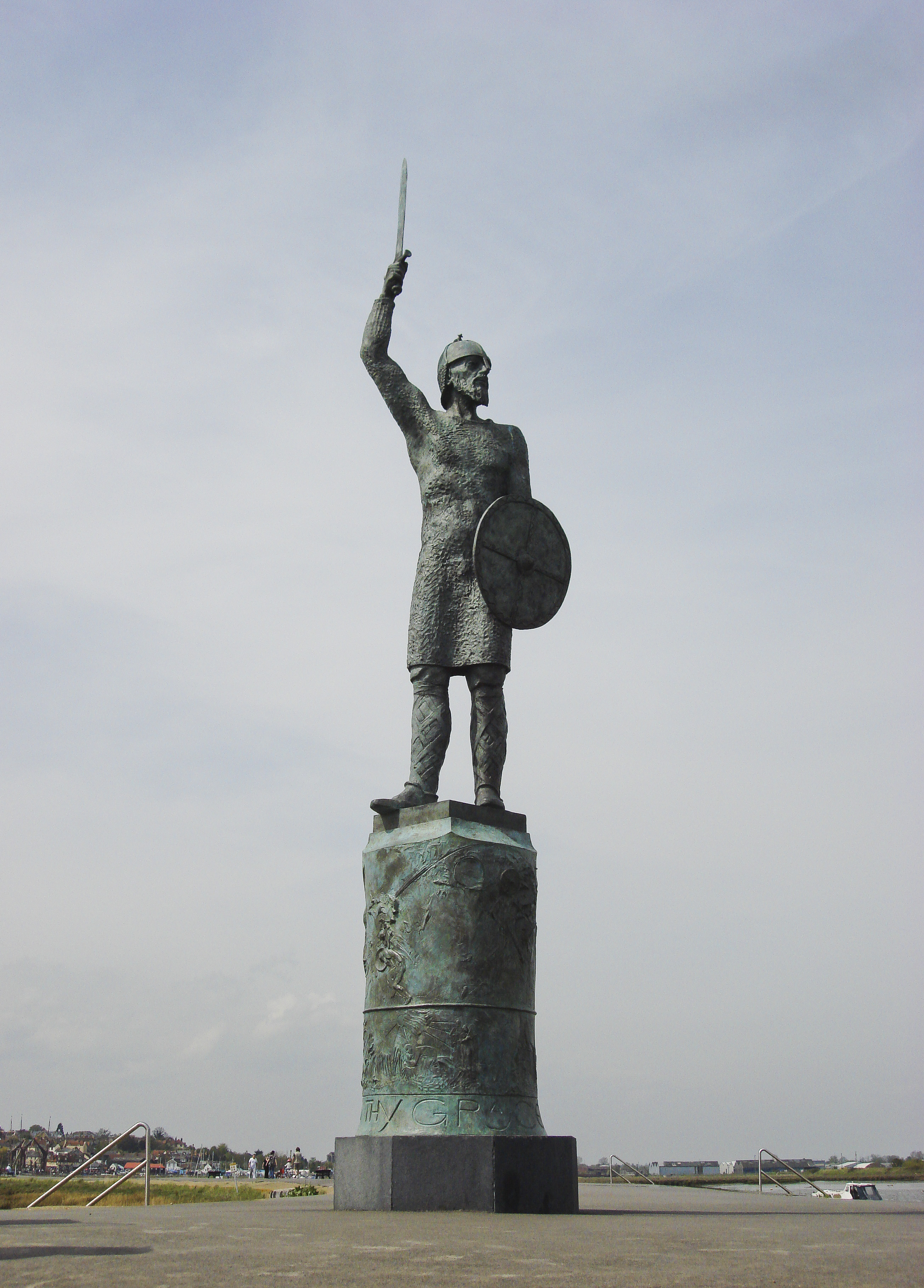|
Æthelstan Half-King
Æthelstan Half-King (fl. 932 – 956) was an Ealdorman of East Anglia who served five kings of England, including Edgar, King of England, Edgar, who was brought up by Æthelstan's wife Ælfwynn, wife of Æthelstan Half-King, Ælfwynn, following the death of Edgar's mother. He was called the "half-king" because he was respected so highly that kings were said to depend on his advice. Many of Æthelstan's close relatives were also involved in important affairs. Soon after the death of King Eadred in 955 he left his position and became a monk at Glastonbury Abbey. Origins Æthelstan was the son of Æthelfrith of Mercia, Æthelfrith, an Ealdorman who held lands in Somerset, Berkshire, and Middlesex. His mother was Æthelgyth, daughter of Æthelwulf. His elder brother Ælfstan and his younger brothers Æthelwold and Eadric, Ealdorman of Wessex, Ædric were Ealdormen of south and east Mercia, Kent and central Wessex, respectively.Hart, 2004 Æthelfrith was an ealdorman in Mercia in the ... [...More Info...] [...Related Items...] OR: [Wikipedia] [Google] [Baidu] [Amazon] |
Glastonbury Abbey Church View From East
Glastonbury ( , ) is a town and civil parish in Somerset, England, situated at a dry point on the low-lying Somerset Levels, south of Bristol. The town had a population of 8,932 in the 2011 census. Glastonbury is less than across the River Brue from Street, Somerset, Street, which is now larger than Glastonbury. Evidence from timber trackways such as the Sweet Track show that the town has been inhabited since Neolithic times. Glastonbury Lake Village was an Iron Age village, close to the old course of the River Brue and Sharpham, Sharpham Park approximately west of Glastonbury, that dates back to the Bronze Age. Centwine of Wessex, Centwine was the first Saxon patron of Glastonbury Abbey, which dominated the town for the next 700 years. One of the most important abbeys in England, it was the site of Edmund Ironside's coronation as King of England in 1016. Many of the oldest surviving buildings in the town, including the The Tribunal, Glastonbury, Tribunal, George Hotel and ... [...More Info...] [...Related Items...] OR: [Wikipedia] [Google] [Baidu] [Amazon] |
Danelaw
The Danelaw (, ; ; ) was the part of History of Anglo-Saxon England, England between the late ninth century and the Norman Conquest under Anglo-Saxon rule in which Danes (tribe), Danish laws applied. The Danelaw originated in the conquest and occupation of large parts of eastern and northern England by Danish Vikings in the late ninth century. The term applies to the areas in which English kings allowed the Danes to keep their own laws following the early tenth-century Anglo-Saxon conquest of Danish ruled eastern and northern England in return for the Danish settlers' loyalty to the English crown. "Danelaw" is first recorded in the early 11th century as ''Dena lage''. The Danelaw originated from the invasion of the Great Heathen Army into England in 865, but the term was not used to describe a geographic area until the 11th century. With the increase in population and productivity in Scandinavia, Viking warriors, having sought treasure and glory in the nearby British Isles, "pro ... [...More Info...] [...Related Items...] OR: [Wikipedia] [Google] [Baidu] [Amazon] |
Byrhtnoth
Byrhtnoth (), Ealdorman of Essex ( 931 - 11 August 991), died at the Battle of Maldon. His name is composed of the Old English language, Old English ''beorht'' (bright) and ''nĹŤĂľ'' (courage). He is the subject of ''The Battle of Maldon'', an Old English poetry, Old English poem; J.R.R. Tolkien's short play in verse, ''The Homecoming of Beorhtnoth, Beorhthelm's Son''; and a modern statue at Maldon, Essex, Maldon. Death in battle His death, while leading the Anglo-Saxon forces against the Vikings in 991, is the subject of the famous Old English poem ''The Battle of Maldon''. As presented there, his decision to allow the Vikings to move to a better position was fatal. He was said to stand well over six feet in height, and was around the age of sixty years at the Battle of Maldon, with "swan-white hair". Although it is believed that he fell early in the battle, some say that it took three men to kill him, one of them almost severing Byrhtnoth's arm in the process. He had previousl ... [...More Info...] [...Related Items...] OR: [Wikipedia] [Google] [Baidu] [Amazon] |
Ælfhere, Ealdorman Of Mercia
Ælfhere (died in 983) was Ealdorman of Mercia. His family, along with those of Æthelstan Half-King and Æthelstan Rota, rose to greatness in the middle third of the 10th century. In the reign of Edward the Martyr, Ælfhere was a leader of the English Benedictine Reform#Later history, anti-monastic reaction and an ally of Edward's stepmother Queen Dowager Ælfthryth, Queen of England, Ælfthryth. After the killing of Edward by Ælfthryth's servants in 978, Ælfhere supported the new king, Ælfthryth's son Æthelred the Unready, and was the leading nobleman in the Kingdom of England until his death in 983. Origins and relations Ælfhere was a son of Ealhhelm (fl. 940–951) who had been one of the several ealdormen in Mercia in the reigns of Kings Edmund I of England, Edmund and Eadred of England, Eadred. The family was of Wessex origin, like most of those prominent in Mercia in the period, and may have been connected to the royal family, probably members of a collateral branch ... [...More Info...] [...Related Items...] OR: [Wikipedia] [Google] [Baidu] [Amazon] |


